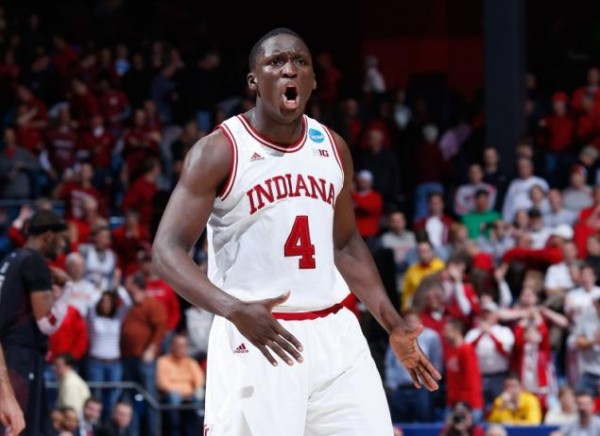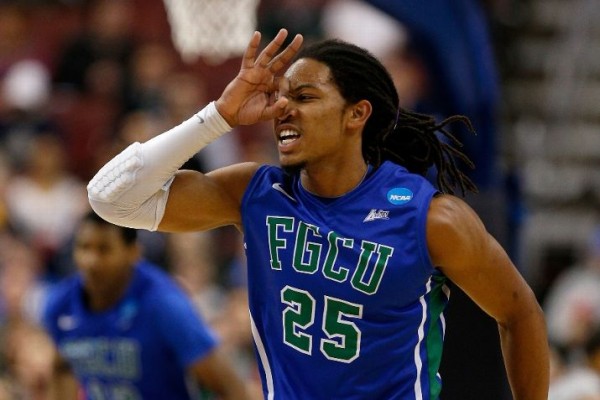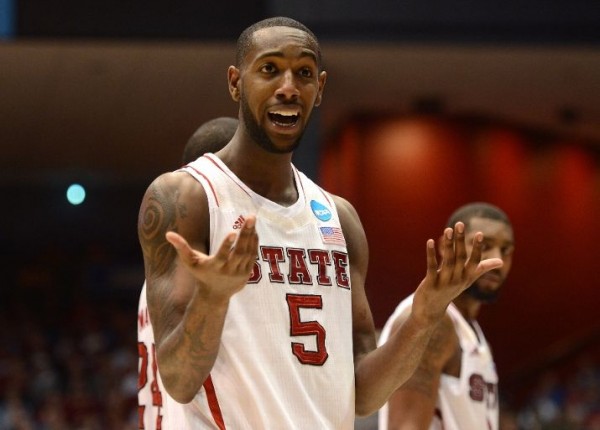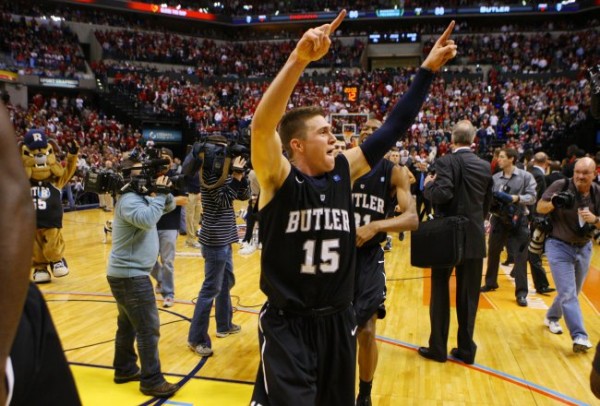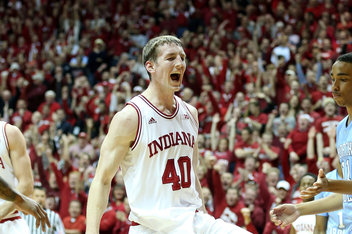ATB: I’m In Love With FCGU, Big Ten Flaunts Superiority and La Salle Quietly Presses Forward…
Posted by Chris Johnson on March 25th, 2013Chris Johnson is an RTC Columnist. He can be reached @ChrisDJohnsonn.
Tonight’s Lede. Florida Gulf Coast Does It Again. Outside of the weak frontrunner status placed upon Louisville after a dominant Big East Tournament run, there wasn’t a whole lot college basketball fans could agree on heading into the NCAA Tournament. Common ground could be found on one particular item: there were going to be upsets. Lots of them. The “no dominant team” theme is a tired headline, but it bears repeating on a night like this, when a No. 15 seed punched its ticket to the Sweet 16 for the first time in Tournament history. We’re down to 16 teams now, but even in a year when chalky, seed-predictable, docile bracket proceedings were far from the main expectation, I don’t think anybody saw this coming…
Your watercooler moment. A Story Everyone Can Get Behind: FCGU.
Nothing more strongly embodies the spirit of March Madness than high-seeded underdogs. Last season’s edition gave us Norfolk State and Lehigh – on the same day, no less – reveling in the national spotlight, 15-seed brothers-in-arms taking the college hoops world by storm. CJ McCollum was the best and most entertaining star nobody had heard of. Kyle O’Quinn was a wide-grinned big man with NBA aspirations. Fast track one year later, and this season’s captivating March underdog story is nothing like anything we’ve ever seen before. Florida Gulf Coast doesn’t have one leading protagonist (besides maybe its head coach, Andy Enfield, who – for reasons basketball-related and not – is something of a hero for every man not partial to Georgetown or San Diego State) or even a specific stylistic strength to explain its remarkable run into the second weekend. The best way to describe it is a cocky but measured confidence, a newfound flamboyance, a heightened sense of what it means to own the spotlight. And all of it comes together to produce the most thrilling on-court product of recent memory. There are dunks and heel-clicks and impossibly hilarious bird-imitating dances and, of course, dunk city. The Florida Gulf Coast Eagles have stolen the show and I don’t see them giving it back any time soon. Until they meet Florida in this week’s Sweet 16 showdown – and seriously, if they win that game, I give up – stories will be written, lives will be unearthed, and the nation will come to embrace college basketball’s most unlikely March heroes.
Sunday’s Quick Hits…
- As Expected, The Big Ten is Dominating. All season the Big Ten was drowned in plaudits and glowing recommendations for its upper-tier strength and top-to-bottom quality. The Big Ten was good, and everybody kind of agreed the league was miles ahead of the rest. Now the NCAA Tournament is confirming our suspicions: after Indiana and Ohio State moved past Temple and Iowa State, respectively, Sunday, the Big Ten is 10-3 in tourney competition and can lay claim to one-fourth of the Sweet 16 field. The Hoosiers, Buckeyes, Michigan State and Michigan hovered near the top of the polls all season, and were just as impressive when gauged on per-possession efficiency metrics (as of Sunday, none ranked lower than eighth in Ken Pomeroy’s metrics). To see that play out on the sport’s biggest stage is, for someone who analyzes the game year-round like me, and for fans who have feted their league’s dominance from Midnight madness to March madness, reassuring.
- The West is Kind of Insane. In a bracket littered with uncertainty and parity, the West region exists in its own province of unpredictability. Ohio State is the only team that has lived up to its seed thus far, and faces as wide-open a path to the Final Four as contender left in the field. The top half of the region will pit Wichita State and – following Sunday’s nail-biting win over Ole Miss – La Salle, who needs just two more wins to go from First Four to Final Four, VCU style, and bring even more wackiness to the field’s weirdest quartile. The Explorers haven’t gotten this far in the Tournament since 1955, but if their stable of talented guards – Ramon Galloway, Tyreek Duren and Tyrone Garland, who skied in the lane with 2.5 seconds left to ice the game with a deft right-handed finish – stay hot, the Final Four is well within their grasps.
































